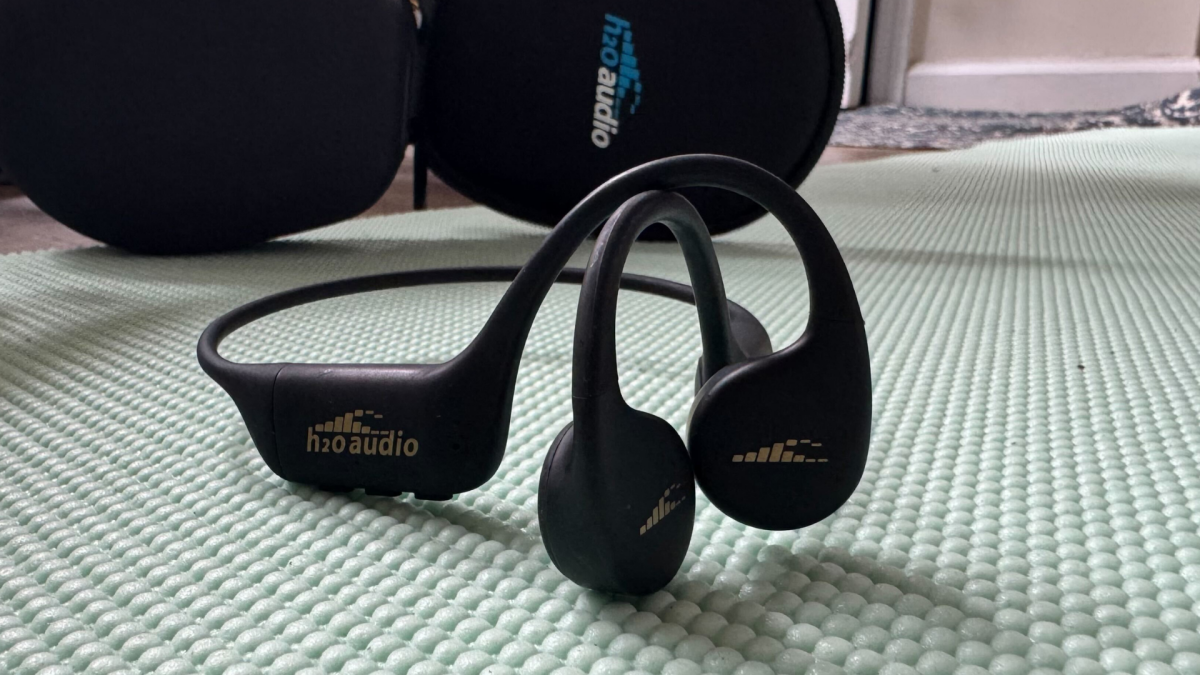H2O Tri 2 Pro Headphones Review: They Do Work Underwater, but Don’t Plan on Using Them on Land

Did you know you can customize Google to filter out garbage? Take these steps for better search results, including adding my work at Lifehacker as a preferred source.
The H2O Tri 2 Pro Multi-Sport headphones aren’t marketed as exclusively underwater headphones, but that capability is where they shine, so that’s how I’m going to treat them. They have an advanced IPX8 Waterproof rating, and are allegedly engineered to withstand submersion up to 12ft/3.6m for an unlimited time. On a more sentimental level, the very thought of bringing my music underwater immediately got my hopes up like a little kid. So I won’t bury the lede: These work underwater.
This is a pair of genuine bone conduction headphones that let you take your favorite playlists into the pool—without disturbing fellow swimmers. I know this last part, because I tested these in a crowded YMCA pool (which is why I sadly don’t have any photos of the headphones in use). This testing environment helped me address a lot of concerns the average user might have: How does the sound work alongside other people splashing? Will the sound from my headphones distract and annoy other swimmers? Will a power-hungry lifeguard yell at me for bringing new-fangled electronics into a public pool?
Those practical considerations matter. At $199, these headphones aren’t an impulse purchase, but they also aren’t reserved for Olympic athletes. I’m a perfectly average swimmer, but this sort of music capability could help me get in the pool way more often. Otherwise, the Tri 2 Pros might be targeting a specific niche of serious swimmers and triathletes who’ve been waiting for this exact solution. The question isn’t whether they work—they do! And it’s cool!—but whether the overall experience justifies the investment.
Design and comfort
The H2O Tri 2 Pro gets the fundamentals right when it comes to aquatic use. The headphones feature a secure, wraparound design that stays firmly in place regardless of your swimming stroke. I went through all the basics: Freestyle, breaststroke, backstroke, and butterfly. Even during all the demands of butterfly, water flying around my head, the headphones never shifted or felt loose. After all, for bone conduction to work, they need consistent contact with your, well, head bones.
This design clearly has water use in mind, rather than street style. The charging case is compact and convenient, making it easy to toss in a gym bag, and the headphones themselves have a practical, no-nonsense aesthetic. I had no issues with battery life.
Credit: Meredith Dietz
Controls and user interface
This is where the H2O Tri 2 Pro reveals its biggest weakness. The button placement is pretty frustrating, with small, closely spaced controls that are far too easy to press accidentally. During swimming sessions, it’s all too easy to accidentally switch from memory mode to Bluetooth mode when you’re simply trying to adjust volume, forcing you to exit the pool and restart your entire audio setup.
Credit: Meredith Dietz
And if you want to skip a track, too bad. If a song comes on that doesn’t match your swimming rhythm, you’re stuck with it for the duration, or you have to sprint to the other end of the pool and reach for your phone to manually change songs. If you ask me, this is a notable oversight.
PLAYLIST+ and Memory Mode
The PLAYLIST+ feature is maybe both the headphones’ most important feature and most exasperating limitation. The concept makes sense: Since Bluetooth doesn’t work underwater, you can record audio directly to the headphones’ internal memory for later playback. However, the way this actually plays out leaves much to be desired.
The recording process requires playing through your desired playlist in real time while connected via Bluetooth, and the volume level during recording is permanently baked into the saved audio. I learned this the hard way. This means you need to dedicate the full duration of your intended playlist—30 minutes, an hour, or more—to the loading process, and you can’t multitask during this time since the audio needs to play at full volume.
For swimmers who use the same workout playlist repeatedly, this time investment might be perfectly worthwhile. But for those who prefer variety or spontaneous music selection, the rigid preparation requirement becomes a significant barrier to regular use.
I might go easier on this whole memory mode process if it had been more reliable during use. The H2O Tri 2 Pro suffers from random disconnections during use. While this would be merely annoying with regular headphones, it becomes genuinely disruptive during swim workouts when fixing the issue requires exiting the pool, toweling off, and troubleshooting the connection.
These connectivity hiccups, combined with the easy-to-accidentally-press controls, create reliability concerns that undermine the otherwise solid swimming experience.
What do you think so far?
Sound quality
The underwater audio experience is genuinely impressive given the physical limitations involved. Water naturally distorts sound transmission, but the H2O Tri 2 Pro delivers audio quality when submerged, or at least, whatever quality I’d expect for its $199 pricetag. The bone conduction technology works as advertised, creating a surprisingly immersive experience that doesn’t disturb other pool users. I can’t understate how simply cool this feels.
However, the above-water performance tells a different story. The sound quality on land is disappointingly tinny and lacks the richness you’d expect from premium bone conduction headphones. Compared to established players like Shokz, which have mastered the art of delivering quality bone conduction audio for terrestrial use, the H2O Tri 2 Pro feels like a compromise.
Swimming performance
Again, this is where the headphones truly shine and justify their existence. The bone conduction design means sound doesn’t travel through the water. I even did a “drop test” of sorts, where I left the headphones playing underwater and then swam away to discover that no sound travels beyond what’s getting conducted through your head bones.
Naturally, different swimming strokes create varying audio experiences. Breaststroke, with its regular pattern of submerging and emerging, leads to volume fluctuations that some swimmers might find distracting. However, strokes that keep you consistently submerged provide a more stable audio experience.
For me, the comfortable fit during vigorous swimming cannot be overstated. These headphones stay put through flip turns, starts, and extended sessions without any adjustment needed.



